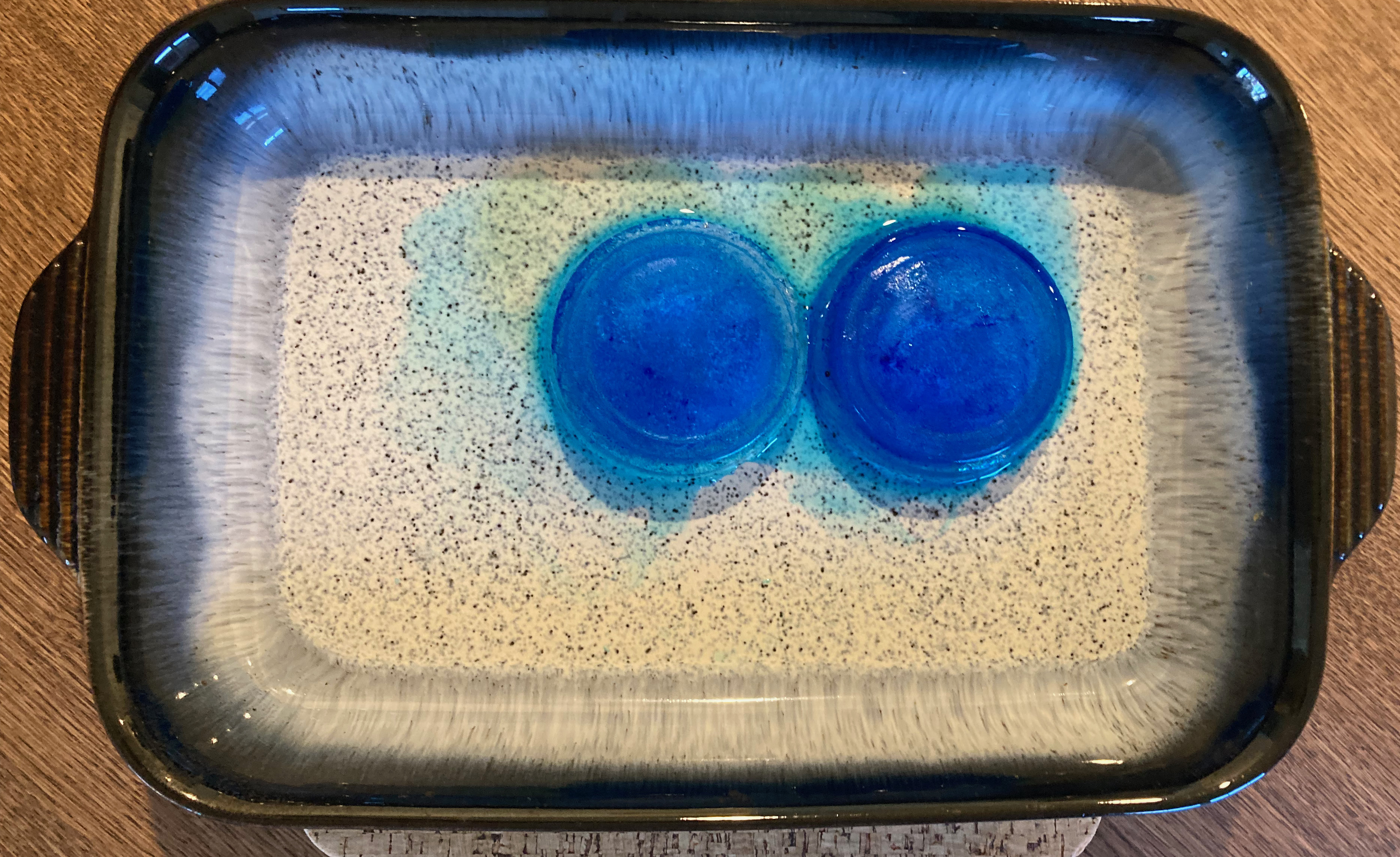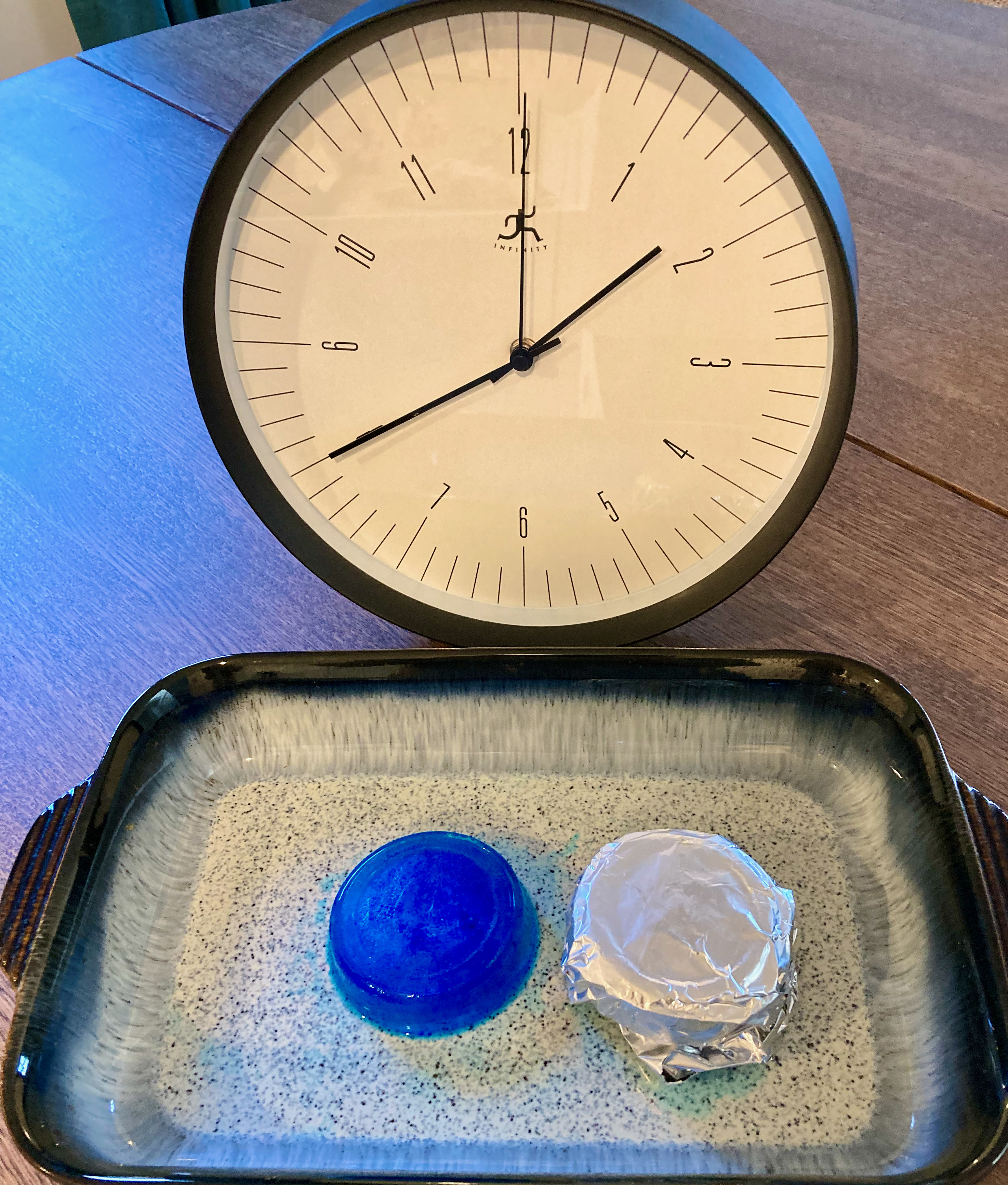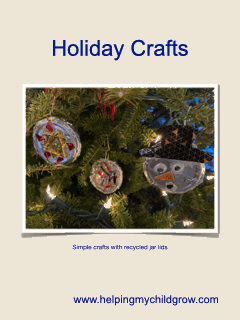Slowest to melt wins!
Give your kids some ice cubes and pieces of material, e.g. foil, newspaper and bubble wrap, and challenge them to come up with a way to stop the ice cubes from melting.
This activity is a great way of initiating an investigation into what materials make good insulators. It promotes the development of scientific understanding and problem solving and can be used to introduce the concept of fair testing.
What you need:
-
Clean, recycled plastic food pots or an ice cube tray to make ice in.
-
Water
-
Different materials e.g. plastic bags, tin foil, paper, fabric, cling film to wrap around the ice cubes
-
A bowl/dish (to put the melting ice cubes in)
-
A timer/clock
-
Camera and/or paper and pencil to record what happens
-
Optional: Food colouring (to make coloured ice cubes)
What to do:
- Make some ice cubes.
-
Fill up each section of the ice cube tray with water, or pour a small amount of water into each plastic pot.
-
Place the ice cube tray/pots in the freezer.
- Leave the water in the freezer for a few hours to freeze. Leaving it to freeze overnight is a good idea.
Top tip:
- To make coloured ice cubes, stir a few drops of food colouring into the water before pouring it into the trays/pots.
-
Cut the materials up into pieces big enough to wrap an ice cube in.
-
Take the ice cubes out of the freezer. Pop them out of the ice cube tray/pots into a dish.

- Quickly, wrap each ice cube up in a different material e.g. wrap one ice cube up in a piece of foil, wrap another ice cube up in a piece of newspaper.

Top tip:
- Leave one ice cube unwrapped. This acts as a control to compare the other ice cubes against.
- Check the ice cubes every 15 minutes and see how long it takes them to melt.

- Record what happens to the ice cubes using photographs or a table/chart.
Top tip:
- A table/chart should include a list of the materials used to wrap the ice in and the time it takes the ice to melt.
Be a science detective
-
Which ice cube do you think will melt first? Why?
-
Which ice cube took the longest to melt?
-
Which ice cube melted the fastest?
-
Which material was the best at keeping the ice cool? Why do you think this was?
-
Which material was the worst at keeping the ice cool? Why do you think this was?
-
What is an insulator?
-
Which material was the best insulator?
-
Was it a fair test? Think about;
- the size of the ice cubes
- the sizes of the pieces of material used to wrap the ice cubes in
- where the ice cubes were left to melt. Were they all in the same place in the room?
-
What do you think will happen if you wrapped an ice cube in two pieces of material, e.g. a piece of newspaper and a piece of bubble wrap? Why? Test out your ideas.
-
What do you think will happen if you use smaller or bigger ice cubes? Test out your ideas.
-
What do you think will happens if you put the ice cubes in different places to melt? Test out your ideas.
-
Do you think that colouring the water with food colouring effects how fast the ice cubes melt? How can you test this out?
Other posts you might like: Whirly Twirly Spinning Tops

